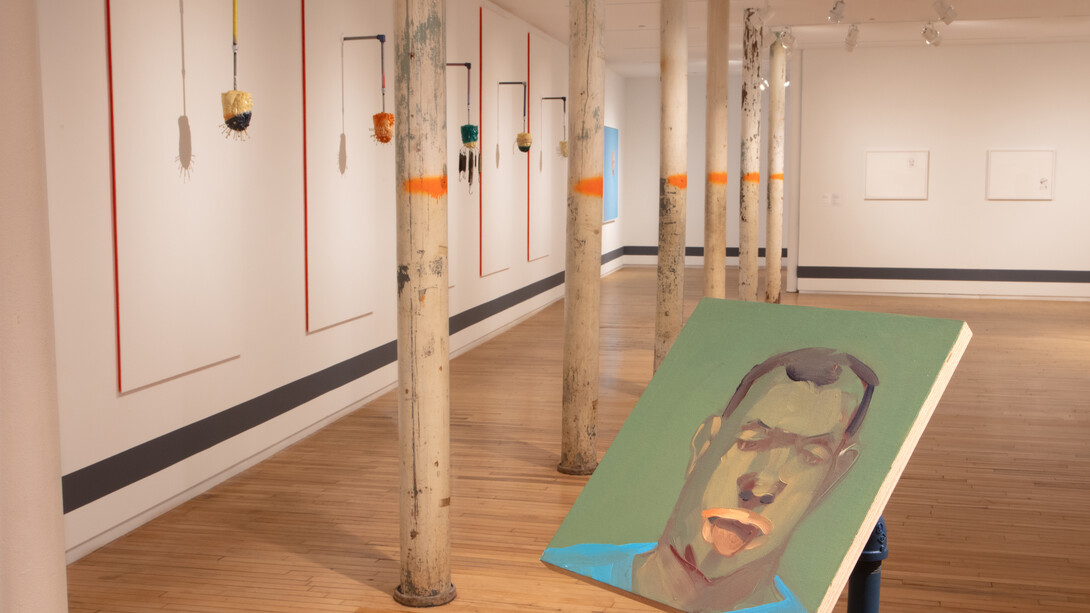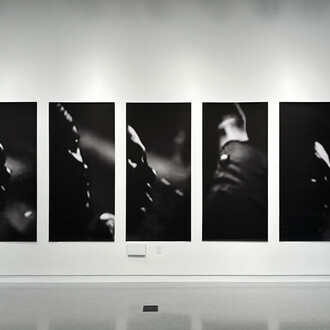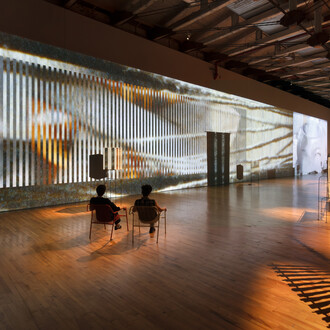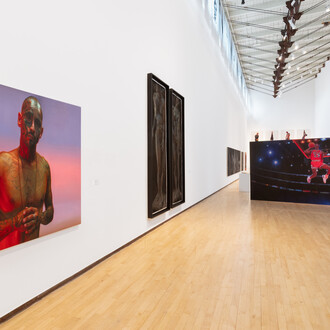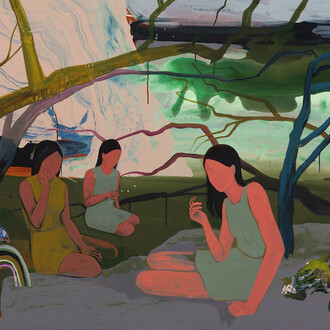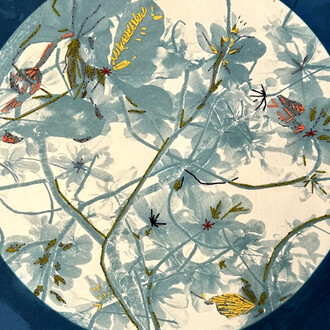MASS MoCA presents the first exhibition from the Curatorial Exchange Initiative (CEI) by New York-based artist Steve Locke. Curated by CEI Fellow Evan Garza, the fire next time is a meditation on uniquely American forms of violence directed at Black and queer people. Locke’s interdisciplinary practice engages issues of identity, desire, race, violence, spectacle, and memory. In the artist’s hands, these complexities reveal as much tenderness and humor as they do brutality.
For most of his decades-long career, Locke has largely worked in portraiture, though recently he has pushed the discipline of painting to its material and conceptual limits through the creation of “freestanding paintings'' and works of public art. This exhibition combines both new and recent works that introduce an increasingly personal, political, and critical engagement with histories of racism, anti-Blackness, modernism, and both the Western art historical canon and American society at large.
“I have never really been interested in trauma, to be completely honest with you,” explains Locke. “I have been interested in justice…the work of healing is not mine to do. My work is to make you look, and to make you unable to look away. ”
the fire next time takes its title from the 1963 book by American author and civil rights activist James Baldwin, which galvanized the American public with its brutal honesty about racial inequality. “Like Baldwin, Locke invites the viewer to grapple with the legacies of racial violence and lynchings,” said Evan Garza. “Yet in the Artist’s work there are no images of killings to be found. Whether through the pictorial use of negative space, the contexts contained within images and objects, or the conceptual use of data, Locke engages deeply with histories of racial violence by allowing the specter of their legacies to hang over his work — a contextual presence that never announces itself but constantly makes itself known.”
The floating or suspended head has been a recurrent figure in Locke’s studio practice for much of the last two decades, often appearing in paintings with a tongue sticking out. Long interested in disrupting the power relationships structured by portraiture, for Locke, the floating or suspended head is as much a representation of precarity, anxiety, or humor as it is a means of reconsidering ways of looking and being seen. Works in the exhibition include the rainbow sign (2024), a new installation commissioned by MASS MoCA, whose towering metal armature and brightly painted exterior gently glow against the wall behind it; a series of wall-mounted companion works, signs 1-6 (2024), which features satyr heads adorned with hooks and hardware, suspended from spray-painted industrial pipes and plumbing fixtures; a new series of freestanding paintings; thirty graphite drawings on paper from Locke’s #Killers series (2017-ongoing) — the largest number of these works exhibited together to date; a data-driven site-specific installation, A partial list of unarmed African-Americans who were killed by police or who died in police custody during my sabbatical from Massachusetts college of art and design, 2014-2015 (2016); several new freestanding paintings; and other recent works on view for the first time.
